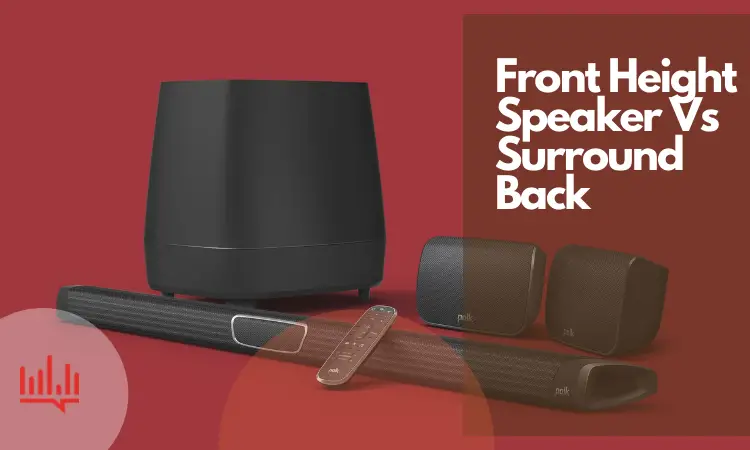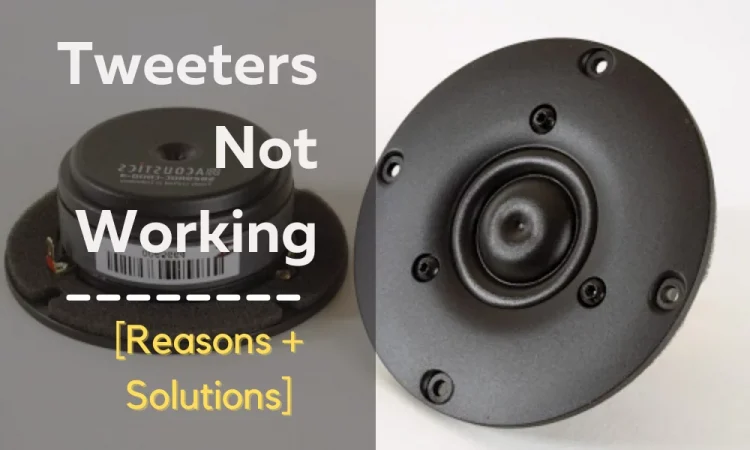Even if you’re not a professional musician, you’ll need a cabinet for your speakers.
Here’s why-
Not only does it protect the speakers from dust and moisture. But also enhances the audio quality! However, all wood does not have the magic to do so.
So, what is the best wood for speaker cabinet?
Baltic birch wood is the best wood for speaker cabinets followed by MDF (Medium Density Fiberboard). Popular plywoods such as Marine Grand Plywood are also highly recommended. If you want pure wood for your cabinet then pine and oak are excellent choices.
These top five choices of cabinet woods will help you decide the best material for speaker cabinets. You can also find out the functions of each by giving this article a quick read.
Let’s go-
Best Wood for Speaker Cabinets: Top Five
In this world of modern innovations, there are a lot of materials out there for your cabinet. It’s often confusing which material you should choose. But all woods are not meant for speaker cabinets. So, before you get your hands on them, you might want to check all those requirements a speaker or a subwoofer need.
Unlike choosing a guitar cabinet, you need to be super picky while choosing wood for a speaker box. Because not any wood would do. You’ll need some special wooden materials that are manufactured just for this.
Now, you might ask, do I really need a cabinet for my speaker?
The answer is simple. Yes. You do. Here’s why-
- A speaker cabinet protects your speakers or subwoofers from accumulating dust.
- If you travel a lot with your speaker set, the cabinet will keep them from damage.
- A cabinet helps control the direction of the sound.
- A wooden cabinet protects the speakers from rusting.
- A wooden cabinet helps to improve sound quality
Speaker cabinets are an absolute essential. Since you have invested in the sound system for your home or an audio system for your car. You might as well allocate a separate budget for cabinet material. Make sure you include the loudspeaker cabinet construction budget as well.
If you want your speakers to give you the best outcome, find the best wood and construct them. The perfect material will keep the speakers well and functional.
Let’s take an in-depth look at the best woods for speaker cabinets:
Type 01: MDF
Medium Density Fiberboard, commonly known as MDF is the most popular choice for a speaker cabinet. The main specialty of this wood board is its density and thickness.
Is mdf good for speaker cabinets?
Most of the MDF cabinets for speakers are 19mm or ¾ inches thick. This makes them a solid pick for speaker cabinets. It keeps the speaker secure and doesn’t decay that easily.
It’s made from a composition of-
- Recycled wood particles
- Resin
- Wax
These three components make the finest uniform texture and density a speaker needs. It allows the sound to resonate through the material. As a result, you experience an enhanced audio quality, for both blu-ray and sacd.
What is the proper mdf thickness for speaker box?
An MDF speaker box should be at least 36mm thick. For smaller speakers, a 24mm thick wall of MDF is preferable.
Pros
Not only is MDF affordable, but it’s also much easier to customize by painting. It’s easy to cut an MDF because of its smooth and grainy composition. So, constructing the cabinet will not be a struggle.
Here’s why MDF is best wood for car speaker box–
The density of MDF is perfect for building a car speaker cabinet. That’s because the sound quality of the speaker does not get distorted or reduced. It’s also very lightweight, so it’s perfect for mobility.
Cons
There are some pitfalls of MDF though. They are not the strongest of woods and that’s why extra caution is needed. The MDF is also a heavy material and tends to swell in a damp environment.
That’s why often people face a dilemma when choosing between plywood or MDF for a speaker box.
Type 02: Baltic Birch Plywood
The Baltic Birch Plywood is another popular (and aesthetic) option for a speaker cabinet. And unlike the MDF, it’s lightweight and can be easily moved around.
It’s the best wood for speaker cabinets out there.
If you own a 15 inch or 18-inch subwoofer then Baltic birch is highly recommended. Durability and uniform density is the specialty of this plywood. This means it has fewer chances of warping. This plywood comes in three different thicknesses- 9mm, 12mm, and 18mm.
Pros
The baltic birch is exceptionally well in enhancing the performance of a speaker. No other wood gives so much clarity to the music. Because of its thick and dense composition, the tone emitted from the speaker doesn’t get interfered with. This is undoubtedly the best plywood for speaker cabinet.
Baltic birch also has the least chance of warping than any other wood. That’s because the texture of the wood is dense, smooth, and durable. So, it does not get too affected by the extreme environment.
Can baltic birch plywood be stained?

The baltic birch plywood tends to stain unevenly unlike other wood plywood. So the best stain for baltic birch plywood is gel stain.
Cons
The only downfall of this perfect wood is its cost. The current price for 5 plies of baltic birch wood is 28 US dollars. The price is high because of the perfect sound effects of the baltic birch speaker cabinet.
Type 03: Marine Grade Plywood
As the name suggests, this plywood is used particularly for building boats! And it makes for great speaker-building material as well. They are commonly found in three different thicknesses- ¼, ⅜, ½, ⅝, and ¾ -inches.
For that, you’ll need a good adhesive. So, what is the best adhesive for speaker box?
The most popular adhesive for building a wooden speaker enclosure is the Titebond II. Also, Polyurethane glue is another popular choice to fill up the gaps in the speaker cabinets for many.
Pros
This kind of plywood is naturally very strong and dense. So you don’t have to worry about wood warping. Similar to Baltic Birch plywoods, marine-grade plywood is also ideal for the speaker’s sound quality. It provides perfect tonal clarity.
Cons
An interesting fact about this wood is that it needs water-resistant glue to attach with other plies of wood. So it makes the best kind of speaker cabinets for boats. Many boats nowadays have speakers. So you can use this plywood to protect your speakers on the boat from the water. But make sure you apply a proper coat of water-resistant seal on the wood.
There are a lot of seals out there in the market. We have curated a list of the best ones, just for you-
Type 04: Oak Wood
Oak is a suitable choice for the speaker cabinet. Though the sound quality does get affected due to the wood’s non-uniform thickness [19mm], it’s still preferred by many.
Pros
Oakwood is a popular choice as well especially if you’re into pure wood. Oak is comparatively softer, durable, and more absorbent to sound resonance than other hardwoods. This is because of its composition. Oakwood is composed of 1.24% of cellulose, which helps to absorb sound resonance.
Another major advantage of using oak as a wooden cabinet is that it’s less prone to decay or warping. Constructing the cabinet with oak is not arduous. That’s because shaping oak wood is very easy. So you can easily design and customize the box.
Cons
The major drawbacks of oak wood are the diminishing sound quality of the speakers and their weight. Oakwoods are generally very heavy.
Oakwoods are almost similar to MDF. Although oak is easily accessible and less expensive than MDF, if you’re wondering which one, you’d want between MDF or solid wood for speakers, we’ll recommend you go for MDF.
Type 05: Pine Wood
Pine is another popular choice for constructing hardwood speaker cabinets. This wood has a thickness of ¾-1 inches.
Generally, pines come in two forms-
- Layers of plywood
- Standard/Pure Pine
The pine plywood has fewer effects of distortion than the standard pine. The main reason is the difference in the composition of pinewoods. If the sound quality is not an issue for you, you can go ahead and buy pine wood for your speaker cabinet.
Pros
Pinewood is massively available and super affordable.
What’s more, it is less prone to rot and decay. Since it’s durable, you can easily treat the wood any way you want.
Cons
The only drawback of pinewood is that the sound quality gets reduced. Apart from the reduced sound quality due to speaker box thickness, pine can be an excellent choice. But not so much for front heights or rear backs in a surround system. And the reason is the front heights and rear backs need to have an open back.
FAQs
Question: Do speakers sound better in a box?
Of course! The wooden cabinets/boxes absorb sound resonance and produce clearer and better music. The wooden box also controls the sound direction, which improves the overall listening experience.
Question: How thick should wood be for a speaker box?
If your wood is 3-4 inches thick, you’re good to go. Thick wooden boxes help the sound of the speaker to be as non-resonant as possible. This improves the clarity of the sound and thus the quality of the sound improves.
Question: Does the size of the speaker box matter?
Definitely! The more the negative space between the box and the speaker the less the sound quality would be. In case your cabinet is larger than the speaker, you can put pads around the inside to decrease the empty space.
Verdict
Choosing the best wood for speaker cabinet is not easy. There are a lot of things at stake when buying and constructing a wooden cabinet for your speakers or subwoofers. But protecting your speaker is as important as speaker placement for a home theatre.
Although MDF is the most preferred wood for the speaker cabinet. You can also examine the other options for your cabinet.
So let us know which wood was your choice for the speaker cabinet in the comments below.
Until then keep rolling!



